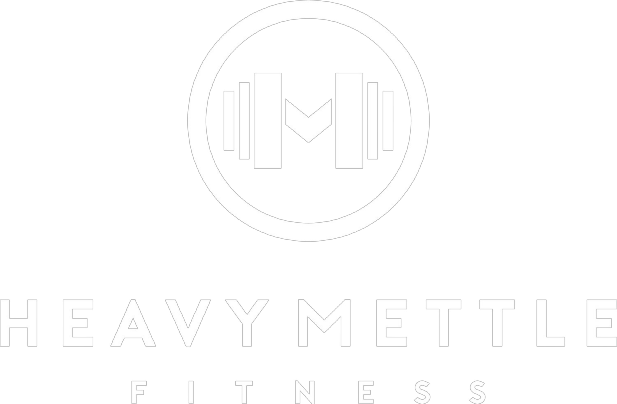Building a Six Pack: How Often to Train Your Abs
Regular ab training is essential to develop a defined six-pack and strengthen your core. Gym-goers of all experience levels may have questions with regard to how often ab workouts should be completed in their weekly training routine. This article will delve into the science behind ab training, discuss the ideal frequency for ab workouts, and provide insights on maximizing muscle growth and reducing body fat to achieve the elusive six-pack. So, let's dive in!
The Importance of Ab Training
The abdominal muscles, commonly known as abs, play a vital role in stabilizing the spine and facilitating movements of the trunk. A strong core also promotes healthy posture, while a weak core can contribute to poor posture and even low back pain. Incorporating ab exercises into your weekly workout routine can strengthen your core, improve overall fitness, and reduce the risk of injury.
Ab Exercises and Workouts
Much like any other muscle group, a sufficient load, and stimulus is required to build strong and well-developed abs. Incorporating a variety of ab exercises into your regular workout routine will enable you to place these muscles under the appropriate amount of stress to facilitate the desired growth. Below are a few of my favorite ab workouts!
Cable/machine crunches
Pallof press
Planks (avoid if you're prone to back injuries/pain)
Deadbugs (include an exercise ball for a greater degree of difficulty)
Knee raises
Due to minimal movement in the spine, the Pallof press is a great ab exercise for beginners.
The Relationship between Ab Workout Frequency and Muscle Growth
As a certified trainer, I'm often asked by clients, "Can you do abs every day?" Referring to ab workouts, of course. My response is, "Yes, you can, but it won't necessarily help you see your abs faster."
One common misconception is that working out your abs every day will lead to faster results. However, just like any other muscle group, your abs require adequate rest and recovery to grow. The body's process of actually "building" muscle occurs during periods of recovery, so it's essential not to overlook this step.
Overtraining can also lead to an increased risk of injury, and in extreme circumstances, it can even result in serious medical complications (like rhabdomyolysis). So, how often should you incorporate an ab workout into your routine to optimize muscle growth?
The Ideal Ab Workout Frequency
The ideal ab training frequency will depend on the individual's experience level. For someone who is new to working out (or at least working out their abs), a goal of completing 12-16 challenging sets (of 8-12 repetitions) in their ab workouts per week may be sufficient to produce gains in strength and muscle volume. In contrast, a more experienced individual may need to incorporate 20 or more weekly sets to facilitate growth in strength and size.
Quality and consistent effort is a critical component of achieving significant changes in one’s physique. However, things like experience level need to be considered when designing a training routine to ensure an appropriate volume of load and stimulus is placed on particular muscle groups. Training too little is unlikely to produce the desired results, while training too much or too often is likely to hinder progress.
If you're a beginner who wants to incorporate 10-14 sets of challenging ab workouts into your routine, consider breaking these sets up throughout your week. During your first ab workout, set a goal of completing 5-7 challenging sets and split them between two different ab exercises. Incorporating a variety of exercises will be ideal for proper muscle stimulation as different exercises (even for the same muscle group) will activate specific muscle fibers more than others. This will ensure you've sufficiently activated the abdominal muscles as an entire muscle group.
Ab Workout Routine
Below are two examples of ab training routines that can be implemented into a beginner's weekly exercise regimen (in addition to other scheduled workouts).
Ab Workout One:
Cable Pallof press 3 sets x 12 reps
Machine ab crunches 3 sets x 14 reps
Weighted crunches with dumbbell 3 sets x 14 reps
Ab Workout Two:
Deadbugs 4 sets x 16 reps (8 reps for each side)
Planks 3 sets x 45 seconds (adjust seconds based on individual experience level)
Factors That Impact Ab Training Frequency
Fitness level, recovery capacity, and an individual's training routine are factors that determine the frequency at which someone is able to train their abs. Consider each of these factors as you design a routine that best meets your needs and goals:
Fitness Level: Beginners may be able to achieve satisfactory results with a lower workout volume (10-14 challenging sets per week) than advanced individuals, who may need to incorporate a higher volume (20 challenging sets each week or more) of ab workouts into their routine to facilitate the desired results
Recovery Capacity: Each individual's recovery capacity differs based on factors such as age, sleep quality, and nutrition. Listen to your body and adjust your ab workout frequency accordingly. If you experience excessive muscle soreness or extended recovery periods, consider reducing the frequency (total volume). You can try increasing the frequency later and more gradually as your body acclimates.
Other Workout Routines: If you engage in activities that heavily involve the core, such as yoga or various recreational sports, you may need to adjust your ab workout frequency to prevent overtraining.
Recovery is an important aspect of a healthy training regimen that should not be overlooked, regardless of experience level.
The Importance of Nutrition and Body Fat Percentage
While ab exercises contribute to a strong core, visible abs are also determined by your body fat percentage. Even well-developed abdominal muscles may remain hidden by excessive body fat. It's important to note that spot reduction (specifically targeting fat loss in one area) is a common myth. So, incorporating a healthy diet and implementing exercises that promote overall fat loss is essential to revealing well defined six pack abs!
To lower overall body fat percentage, focus on a balanced diet consisting of lean proteins, whole grains, healthy fats, and an appropriate calorie deficit. Combine this with regular resistance training, cardiovascular exercises, and a consistent ab training routine to maximize results.
How Long Does It Take To Get Abs?
The timeline for achieving visible abs varies significantly based on factors such as starting body fat percentage, current fitness level, and adherence to a structured workout and nutrition plan (how consistent and disciplined someone is with their regimen). How long it takes to get abs will depend entirely on the individual and their commitment to their weight loss routine!
How Long Does It Take To Get Abs If You Workout Everyday?
Based on my experience as a certified personal trainer, someone who's below 15% body fat (probably considered to be "skinny") may be able to see their abs (six pack abs) in as little as eight weeks with regular exercise and healthy dietary habits. However, for someone with considerable body fat to lose (let's say over 20% body fat), it may take anywhere from six months to a year to get abs (visible abs). Essentially, the more body fat you have and the less disciplined you are with your weight loss regimen, the longer it takes to get abs.
The Bottom Line
Finding the ideal ab workout frequency depends on various factors, including your fitness level, recovery capacity, and overall goals. Generally, 2-3 ab workouts per week provide a good starting point for most individuals. While challenging workouts are necessary for well-built abs, remember not to overlook the importance of recovery and a well-balanced diet.
If you’re interested in taking your physique and fitness to the next level, hiring a personal trainer can be a step in the right direction. Heavy Mettle Fitness offers private personal training services. Explore our site to learn more about how our certified personal trainers in Austin can help you achieve your health and fitness goals!
*Please note that I am not a medical professional and you should always consult with your doctor before beginning an exercise and/or nutrition regimen.





